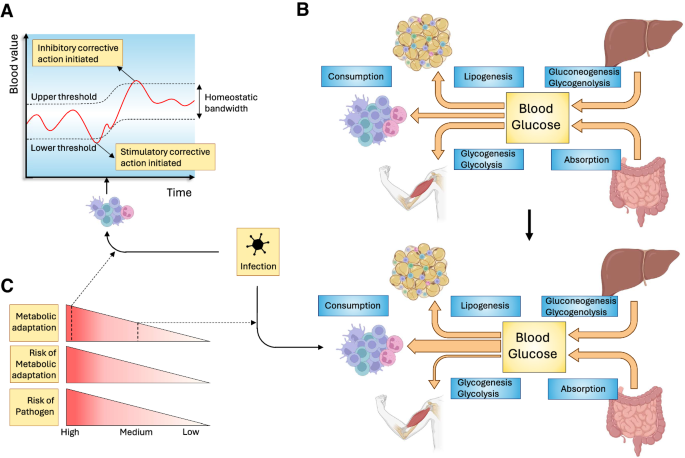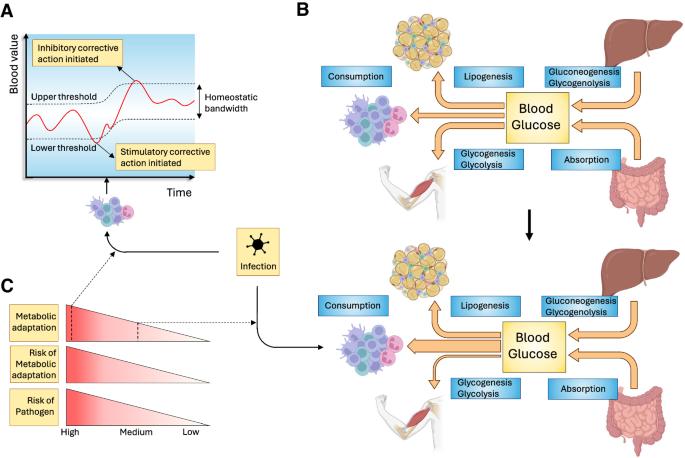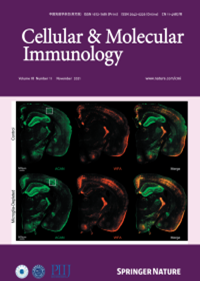The immunology of sickness metabolism
IF 21.8
1区 医学
Q1 IMMUNOLOGY
引用次数: 0
Abstract
Everyone knows that an infection can make you feel sick. Although we perceive infection-induced changes in metabolism as a pathology, they are a part of a carefully regulated process that depends on tissue-specific interactions between the immune system and organs involved in the regulation of systemic homeostasis. Immune-mediated changes in homeostatic parameters lead to altered production and uptake of nutrients in circulation, which modifies the metabolic rate of key organs. This is what we experience as being sick. The purpose of sickness metabolism is to generate a metabolic environment in which the body is optimally able to fight infection while denying vital nutrients for the replication of pathogens. Sickness metabolism depends on tissue-specific immune cells, which mediate responses tailored to the nature and magnitude of the threat. As an infection increases in severity, so do the number and type of immune cells involved and the level to which organs are affected, which dictates the degree to which we feel sick. Interestingly, many alterations associated with metabolic disease appear to overlap with immune-mediated changes observed following infection. Targeting processes involving tissue-specific interactions between activated immune cells and metabolic organs therefore holds great potential for treating both people with severe infection and those with metabolic disease. In this review, we will discuss how the immune system communicates in situ with organs involved in the regulation of homeostasis and how this communication is impacted by infection.


疾病代谢免疫学。
每个人都知道,感染会让人感到不适。虽然我们认为感染引起的新陈代谢变化是一种病理现象,但它们是一个经过精心调节的过程的一部分,这一过程取决于免疫系统与参与调节全身平衡的器官之间的组织特异性相互作用。免疫介导的体内平衡参数变化会导致循环中营养物质的产生和吸收发生改变,从而改变主要器官的新陈代谢率。这就是我们生病的感受。病态新陈代谢的目的是创造一种新陈代谢环境,使机体能够以最佳状态抵抗感染,同时剥夺病原体复制所需的重要营养物质。疾病新陈代谢依赖于组织特异性免疫细胞,它们根据威胁的性质和严重程度调控反应。随着感染的严重程度增加,参与其中的免疫细胞的数量和类型以及器官受影响的程度也会增加,这就决定了我们生病的程度。有趣的是,许多与新陈代谢疾病相关的变化似乎与感染后观察到的免疫介导的变化重叠。因此,针对涉及活化免疫细胞和代谢器官之间组织特异性相互作用的过程,对于治疗严重感染者和代谢疾病患者都具有巨大的潜力。在本综述中,我们将讨论免疫系统如何与参与调节体内平衡的器官进行原位交流,以及这种交流如何受到感染的影响。
本文章由计算机程序翻译,如有差异,请以英文原文为准。
求助全文
约1分钟内获得全文
求助全文
来源期刊
CiteScore
31.20
自引率
1.20%
发文量
903
审稿时长
1 months
期刊介绍:
Cellular & Molecular Immunology, a monthly journal from the Chinese Society of Immunology and the University of Science and Technology of China, serves as a comprehensive platform covering both basic immunology research and clinical applications. The journal publishes a variety of article types, including Articles, Review Articles, Mini Reviews, and Short Communications, focusing on diverse aspects of cellular and molecular immunology.

 求助内容:
求助内容: 应助结果提醒方式:
应助结果提醒方式:


